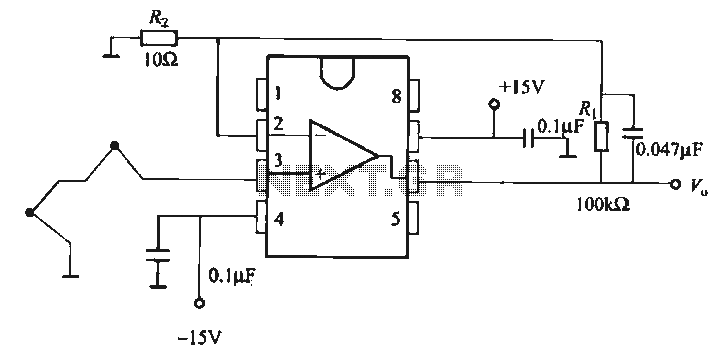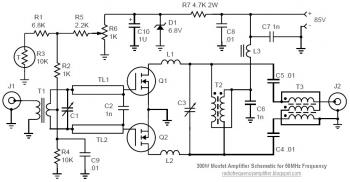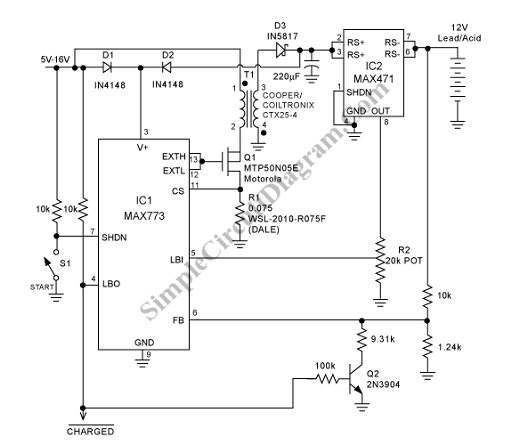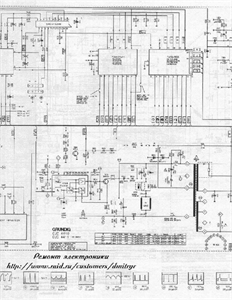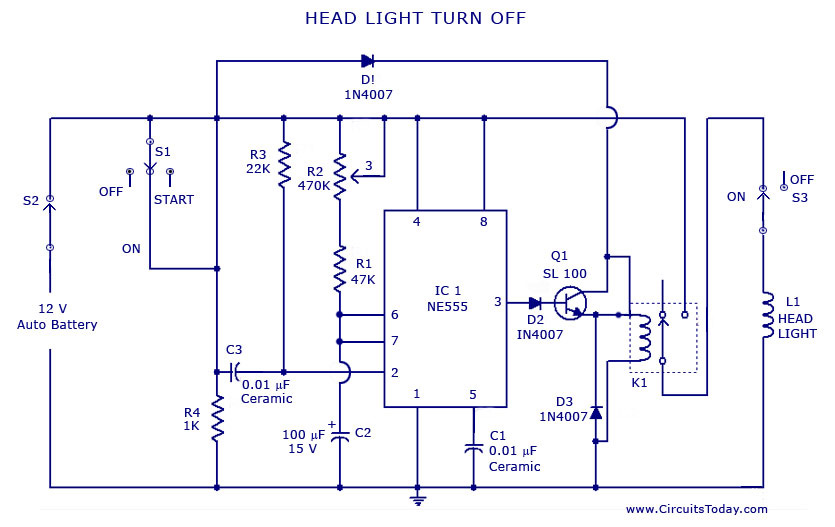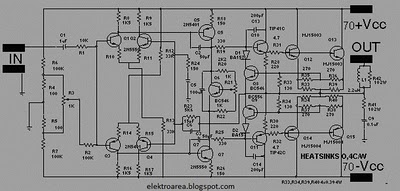
Time-Out Circuit
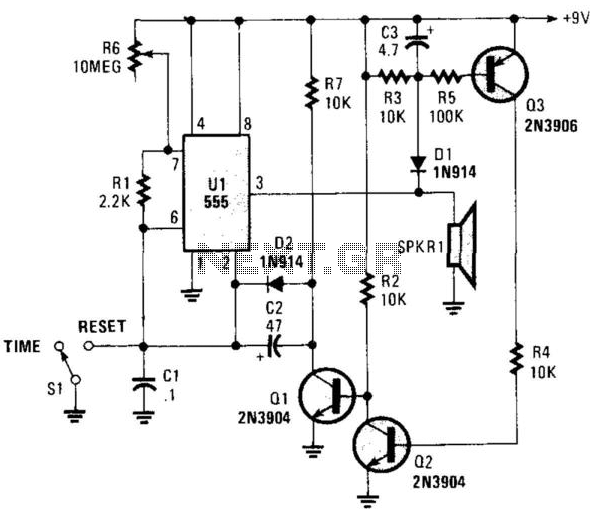
This circuit operates in astable mode and produces a tone at the end of the first period, which can last several minutes. When switch SI is in the time position, transistor Q3 is turned off because pin 3 of operational amplifier Ul is high, and diode Dl keeps Q3 in cutoff. Transistor Q2 remains off, while transistor Ql is on, grounding the negative end of diode D2 and capacitor C2. Consequently, capacitors C1 and C2 are returned to ground. After approximately 1.1 times R6 multiplied by the sum of C1 and C2, the timer cycle completes, causing pin 3 of Ul to go low. This action turns on transistors Q3 and Q2, cuts off Ql, and effectively disconnects capacitor C2. The circuit then oscillates with a period determined by resistor R7 and capacitor C1, as diode D2 becomes forward-biased. A tone is generated, which can be heard from speaker SPKR1. Closing switch S2 resets the circuit.
The described circuit functions as an astable multivibrator, generating a continuous square wave output that produces an audible tone through the speaker. The operational amplifier Ul serves as the core timing component, with its output controlling the state of the transistors Q1, Q2, and Q3. The configuration ensures that the circuit oscillates between two stable states, producing a periodic signal.
In the initial state, when switch SI is engaged, capacitor C1 and C2 are charged, and the voltage across them influences the output of the operational amplifier. The timing period is primarily determined by the values of resistor R6 and the capacitance of C1 and C2, which dictate how quickly the capacitors charge and discharge. The relationship of 1.1 times R6 with the total capacitance creates a predictable timing cycle, allowing for consistent tone generation.
As the cycle progresses, when the output of Ul transitions low, it triggers the turning on of Q3 and Q2, which then alters the state of Q1, effectively disconnecting capacitor C2 from the circuit. This transition allows the circuit to enter the oscillation phase, where the timing is now governed by R7 and C1. The forward biasing of diode D2 permits the oscillation to continue, creating a tone output that is transmitted through SPKR1.
The reset functionality provided by switch S2 allows for the circuit to be restarted, returning it to its initial state. This feature is crucial for applications requiring periodic tone generation, enabling the user to control the start and stop of the oscillation at will. Overall, this astable circuit design is efficient for producing sound signals and can be utilized in various electronic applications, including alarms, timers, and sound-generating devices. This circuit operates in the astable mode and at the end of the first period (up to several minutes), it produces a tone. When SI is placed in the time position, Q3 is cut off because pin 3 of Ul is high and Dl holds Q3 in cutoff. Q2 is off, and Ql is on, which grounds the negative end of D2 and C2. Therefore, CI and C2 are returned to ground. After a time of about 1.1 R6 (Ci + C2), the timer cycle completes and pin 3 Ul goes low. This turns en Q3 and Q2, cuts off Ql, and effectively disconnects C2. Now, the circuit oscillates with a period determined by R7 and CI, because D2 is forward-biased. A tone is then generated and can be heard from SPKR1. Closing S2 resets the circuit.
The described circuit functions as an astable multivibrator, generating a continuous square wave output that produces an audible tone through the speaker. The operational amplifier Ul serves as the core timing component, with its output controlling the state of the transistors Q1, Q2, and Q3. The configuration ensures that the circuit oscillates between two stable states, producing a periodic signal.
In the initial state, when switch SI is engaged, capacitor C1 and C2 are charged, and the voltage across them influences the output of the operational amplifier. The timing period is primarily determined by the values of resistor R6 and the capacitance of C1 and C2, which dictate how quickly the capacitors charge and discharge. The relationship of 1.1 times R6 with the total capacitance creates a predictable timing cycle, allowing for consistent tone generation.
As the cycle progresses, when the output of Ul transitions low, it triggers the turning on of Q3 and Q2, which then alters the state of Q1, effectively disconnecting capacitor C2 from the circuit. This transition allows the circuit to enter the oscillation phase, where the timing is now governed by R7 and C1. The forward biasing of diode D2 permits the oscillation to continue, creating a tone output that is transmitted through SPKR1.
The reset functionality provided by switch S2 allows for the circuit to be restarted, returning it to its initial state. This feature is crucial for applications requiring periodic tone generation, enabling the user to control the start and stop of the oscillation at will. Overall, this astable circuit design is efficient for producing sound signals and can be utilized in various electronic applications, including alarms, timers, and sound-generating devices. This circuit operates in the astable mode and at the end of the first period (up to several minutes), it produces a tone. When SI is placed in the time position, Q3 is cut off because pin 3 of Ul is high and Dl holds Q3 in cutoff. Q2 is off, and Ql is on, which grounds the negative end of D2 and C2. Therefore, CI and C2 are returned to ground. After a time of about 1.1 R6 (Ci + C2), the timer cycle completes and pin 3 Ul goes low. This turns en Q3 and Q2, cuts off Ql, and effectively disconnects C2. Now, the circuit oscillates with a period determined by R7 and CI, because D2 is forward-biased. A tone is then generated and can be heard from SPKR1. Closing S2 resets the circuit.
